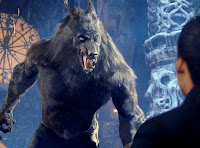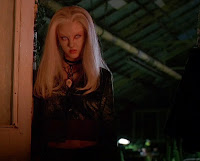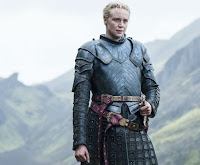And now I’d like to take a minute and talk to you about this really cool Machine Man figure I got off eBay this week.
No, not really. Although he is pretty cool. He’s got replacement hands with pieces so it can look like his arms are extending like they do in the comics.
(someone at Marvel should let me write Machine Man)
Anyway, I thought it might be good to revisit action. Yes, anything my characters do is an action, but I specifically want to talk about action. The dinosaur cyborg swordfight/ gunfighter strafing the room/ six burly guys in a bar trying to take out one MMA fighter and getting their asses kicked kind of action. The type of action your college writing professor said was pandering to the lowest common denominator.
I love a good action scene. On the page. In a movie. Hell, some television shows these days have fantastic action scenes. And I’ve been part of a few action scenes here and there in my own life.
Action, by its very nature, is fast. It’s a blur. If you’ve ever been part of an accident, a fight, a collision, or any kind of really dynamic moment, you know what I’m talking about. In the moment, things are just happening. It’s not until later, when things settle down, that we take stock and piece together all the details of what just happened. And then I’m not quite sure how my arm got cut or how my pant leg got ripped or oh crap is that my blood?
Here are a couple tips I try to keep in mind when I’m writing action scenes.
Keep it fast—Action can’t drag. If it takes a full page for someone to throw a punch and connect, that means things are happening in slow motion. Even a paragraph can seem like a long time if I stretch stuff out.
My personal belief is action shouldn’t take much longer to read then it would to experience. Throwing that punch and the moment of contact are a sentence, tops. I pare fight scenes and action moments down to the bare minimum so they read fast. Two ways I do this are to clump some actions together, and also to trust the reader to figure out what happened on their own.
—Hector kicked one of the man’s feet away and flung his head down at the formica tabletop.
—One minute Officer Barroll had the young woman under control and then she kicked off the ground, went up over the officer’s shoulder, and now somehow she was behind him pushing his arm up along his spine.
Notice how in that second example you probably (hopefully) got a cool mental image of what happened, but you’ll notice I didn’t give a ton of details. I just provided some quick images and a bit of tone. Your brain filled in all the connective tissue, fleshing out the moment and creating a lot of the action.
Keep it simple—I know a lot of terminology for weapons and martial arts, but I actually try not to use a lot of it when I write. Again, just my opinion, but I think a lot of that “gun porn” type stuff clutters up action scenes. I want this to move fast, and the more technical I get, the less likely most people will know what I’m talking about. Yes ushiro geri is the correct term for what Wakko just did, but if my reader has to stop to sound out words or parse meanings from context… that’s probably breaking the flow.
There’s nothing wrong with terminology, but there’s a time and a place for everything. That time is rarely when someone’s swinging a baseball bat at your head or when you’re shooting at a charging T-Rex. Action is much more about instinct, and instinct rarely involves copyrights, brand names, or model numbers.
Keep it sensory—I just mentioned action is instinctive. There isn’t a lot of thought involved, definitely not a lot of analysis or pretty imagery. With that fast, simple nature in mind, I try to keep a lot of action to sounds, sights, and physical sensations. Like I mentioned up above, specific details can come later. I could write about a knife going deep into someone’s arm, severing arteries and veins as it goes, but in the heat of the moment it might just be the hot, wet smell of blood and the scrape of metal on bone.
Granted, writing this way can make it hard to describe some things, but again… a lot of that gets figured out after the fact anyway. My characters will have a chance to sort things out once everything cools down. And some things get bandaged up.
Keep it real—Finally, like so many things in writing, it all comes down to characters. Action needs to be based in characters with real emotion, characters we have some investment in. A stranger in a high speed car crash is kind of sad in an abstract way, but Yakko in a car crash is a tragedy and we want constant updates.
We also need to have some sense of stakes here. Is someone’s life at risk? Is it someone we should care about? Someone who’s going to have an effect on the plot? If I don’t have any of this, odds are my action is just some empty filler.
Now, as I mentioned at the top, these are all just tips, not rules. There’s lots of times you might want to ignore one or two of them. But there’s one particular exception I want to talk about.
 A pretty common character to come across in stories is what we could probably call the fighting savant. You know the type. Batman, Melinda May, Jack Reacher, Stealth, John Wick—they’re the tough, unstoppable characters who’ve taken physical action to an art form through years of study and experience. For these people to not use precise terminology for weapons or moves could seem a little odd. It makes sense they’d be able to dissect action as it’s happening around them, picking out beats and planning out responses the way you or I pick our lunch at Panda Express.
A pretty common character to come across in stories is what we could probably call the fighting savant. You know the type. Batman, Melinda May, Jack Reacher, Stealth, John Wick—they’re the tough, unstoppable characters who’ve taken physical action to an art form through years of study and experience. For these people to not use precise terminology for weapons or moves could seem a little odd. It makes sense they’d be able to dissect action as it’s happening around them, picking out beats and planning out responses the way you or I pick our lunch at Panda Express.
But remember… these characters by their very nature should be rare. If I’ve got a dozen utterly badass characters who all have badass moves with badass weapons… it means I’ve got a dozen guys who are all kinda average. It’s monotone, and it’s going to get boring real fast.
Two smaller tips to keep in mind when dealing with these savant-folks. One… think about fairy tales. You’ve probably seen some version of that old Grimm’s tale about the guy with a collection of friends. One is the strongest person in the world, one’s the fastest person in the world, one’s got the best hearing in the world… you know the story I’m talking about, yes? It’s a group of people who have superlative abilities, but in a very narrow, focused range. They don’t have a lot of overlap, which is why each one of them is individually important to my team. I mean, if I’ve got a team where every person can hit a bullseye from a hundred yards with a rifle, pistol, or knife… well, what the hell do I need a sharpshooter for? If they’re all strong enough to punch through concrete, what do I need a strong guy for? And if everyone on the team can do everything… I can probably get by with a much smaller team.
The other thing to remember is point of view. This character might be a master of unarmed combat, but this one is a borderline giant who favors brute strength and savagery. They’re both going to give us some unstoppable action, but it’s going to be a very different kind of action depending on whose narrative it is. And that should reflect in my writing.
And that’s that. A handful of ideas for writing fast, hard-hitting action.
Although I did actually have one other thing to say about action. But maybe it should wait until next time.
Until then, go write.















